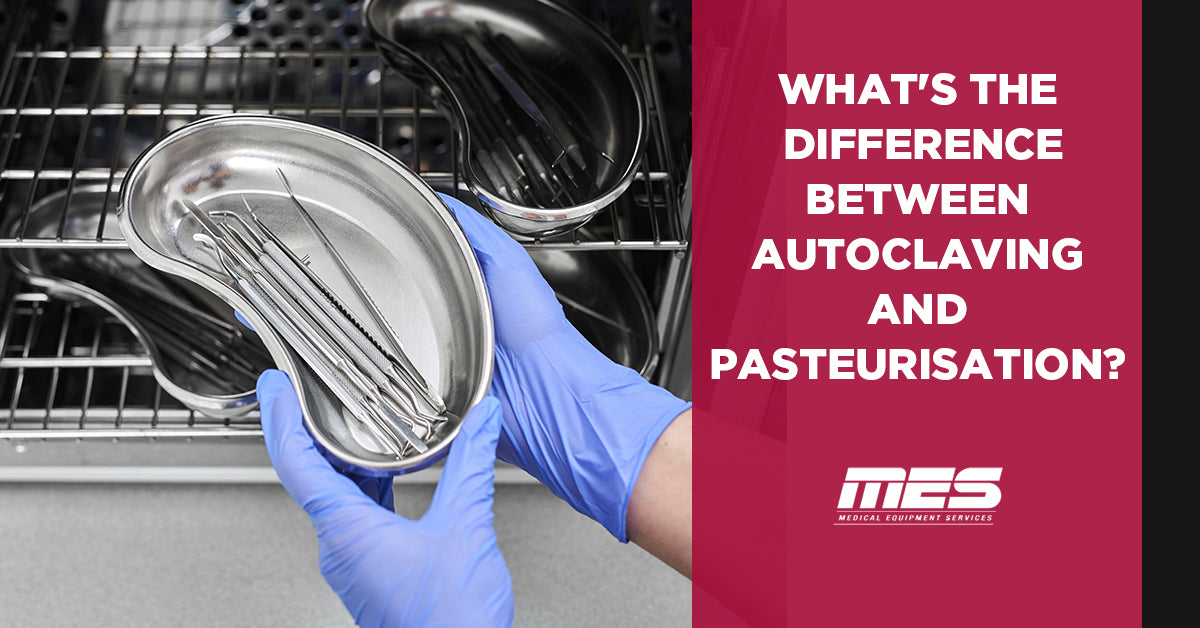
The processes of both autoclaving and pasteurisation are used to kill and eliminate pathogens or microorganisms such as bacteria, fungi, viruses, etc.
Pasteurising is most commonly associated with eliminating harmful microorganisms in some types of food - especially dairy products, wine, and eggs.
However, both processes also use high temperatures to disinfect and sterilise reusable medical equipment and instruments in the medical and dental industries.
There are however many differences between the two processes:
- Pasteurisation heats water to a temperature of 75°C whereas an autoclave produces steam at high pressure at temperatures exceeding 120°C.
- Contact with equipment to be disinfected is 30 minutes in pasteurisation whereas an autoclave generally takes a period of between 15 and 20 minutes to achieve optimal sterilisation.
However, autoclave times can depend on the type of material being sterilised as well as the volume of items to be sterilised.
- Pasteurisation requires that equipment be dried after disinfection, usually using an air system.
Autoclaving delivers equipment that is dry and some machines will cool items.
- Pasteurisation does not effectively eliminate all pathogens whereas autoclaving sterilises medical equipment effectively.
What Is Pasteurisation?
Pasteurisation involves placing medical instruments into a machine that heats water to a temperature of 75°C for a period of 30 minutes.
Air drying may be a feature included in some types of pasteurisation equipment.
Although pasteurisation at Ultra High Temperatures for shorter periods of time are available to pasteurise food, this practice is not generally used in the medical industry as it is not a suitable method for all types of materials.
Although pasteurisation is an effective means of disinfecting reusable medical equipment, instruments and devices, it is not an effective means of total sterilisation as it does not eliminate all pathogens or microorganisms.
It is therefore not widely used in the medical industry but is a cost-effective solution in many areas of the world.
It should also be noted that pasteurisation is not the same as boiling as temperatures do not reach boiling point.
Boiling is a more effective means of sterilisation than pasteurisation.
What Is Autoclaving?
An autoclave is a machine that releases steam under high pressure at high temperatures for a specified period of time.
The temperature, as well as time, is largely dependent on the type of materials that are placed in the autoclave.
Most types of materials used in the medical industry that are reusable are suitable for sterilisation in an autoclave.
Because the autoclave uses steam, the sterlised items do not require air or other types of drying and the process allows for complete evaporation of moisture.
However, cooling features may be necessary in order to allow items to cool quickly before handling.
The high temperatures are effective at eliminating bacteria and other microorganisms making it a highly effective means of sterilisation in all medical fields and practices.
Training is required to operate the autoclave correctly and to avoid any hazards associated with sterilising equipment at high temperatures and pressure.
An autoclave should also be well maintained and serviced regularly in order to eliminate hazards and risks of ineffective sterilisation.
Autoclaves are available in a range of different sizes and types in order to meet the needs of different applications in different medical settings.
For example, larger autoclaves will meet the greater demand for sterilisation in a hospital whereas smaller, counter-top models are ideal for a small dental practice.
Disinfecting and sterilising of reusable medical equipment is essential in all medical industries to prevent the spread of disease and infection.
Pasteurisation is an effective means of disinfecting and eliminating some pathogens while autoclaving is considered to be the far more effective solution to achieve total sterilisation.
If you are searching for the best medical equipment supplier in Australia, especially autoclaves, look no further than Medical Equipment Services Australia.
We were originally established in 1952 in order to provide electro-medical products to healthcare professionals across the country.
The company (Medical Equipment Services) was acquired by Medical Equipment Australia in 2009. Since then, we have also expanded into the dental industry.


